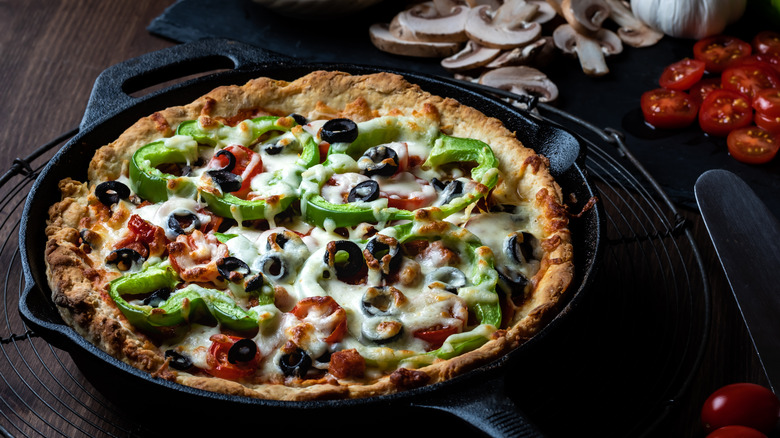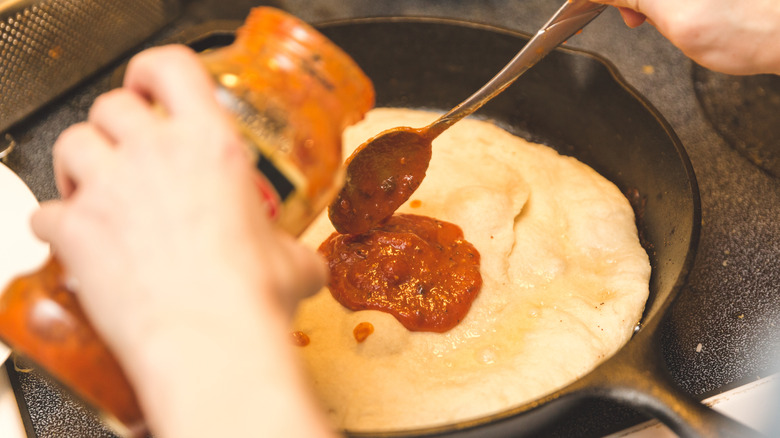Create A DIY Pizza Stone With A Tool You Already Have In Your Kitchen
You don't need a pizza oven to make pizza at home; your regular range will do. But your oven probably can't reach the blisteringly hot temperatures of a pizza oven, so it's extra important to create an environment where your pie can bake evenly.
The key to an evenly-baked pizza? A pizza stone. Pizza stones are large, flat pieces of — nope, not stone — ceramic or cordierite. The thick slab absorbs heat and retains it for a long time, so cooks pre-heat the stones to ensure the dough has a nice, hot surface to rest on right from the get-go. That's how you get a crispy crust and a well-baked pie.
But pizza stones aren't exactly a kitchen staple. If you're making pizza for the first time, you probably don't want to run out and buy one. Instead, turn to a tool you probably already have: A cast iron skillet.
You might have heard that cast iron conducts heat well. It's a common source of confusion because cast iron is actually a bad conductor of heat, but it can retain heat better than most metals. It'll stay nice and hot when you plunk down your pie — just like a good pizza stone would. While you can use a sheet pan, the thin metal cools down on contact with your pizza, so won't provide the heat you need. Plus, a standard Lodge cast iron skillet can withstand temperatures of up to 650 degrees Fahrenheit, while baking sheets can warp in high heat.
How to use a cast iron skillet as a pizza stone
Just like a regular pizza stone, you'll need to pre-heat your cast iron skillet. Take your time. Remember how cast iron is a bad conductor of heat? That means it'll heat up slowly. Let it sit for 20 minutes minimum, or up to an hour if you want to be thorough. Once it's fully heated, take it out and set it on a heat-safe surface. Do use heavy-duty oven mitts — not all mitts can withstand such high temperatures.
Next, put your dough in the pan and arrange your toppings. Normally, cooks use a pizza peel — a tool that looks like a giant spatula — to slide the pizza onto the stone. But that won't work with a cast iron skillet because of its raised sides. If you're making Sicilian-style pizza, consider baking your pizza crust first so it can rise without the weight of the toppings. Otherwise, have your dough and toppings at the ready and assemble them in the pan. Be careful: The high sides of a cast iron skillet can make it tricky to place your pie. If you're nervous about burning yourself, consider turning your skillet upside down and using the bottom as your cooking surface. If you do opt to use your pan wrong-side-up, you'll want to put a sheet pan underneath to catch drips.
Cook your pizza until it's done, then pull it out and enjoy. Need inspiration? Check out our pizza recipes.

